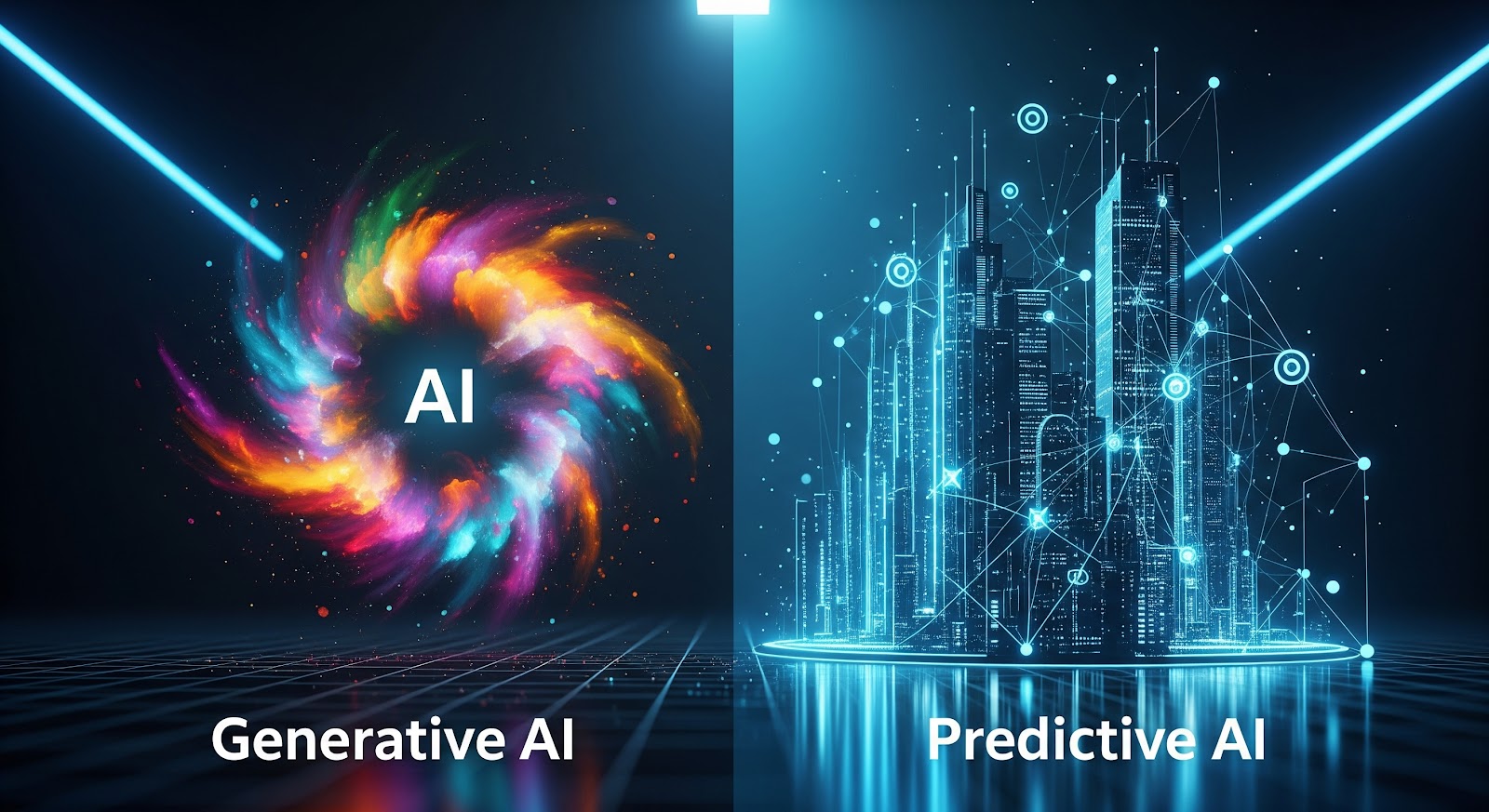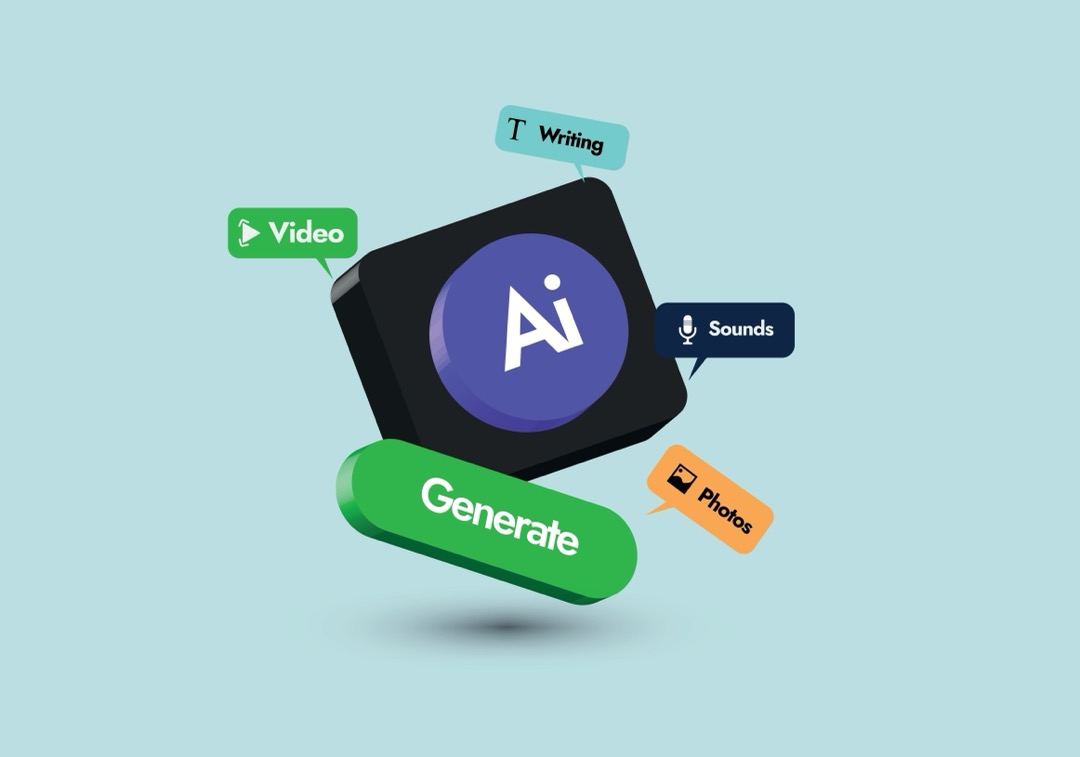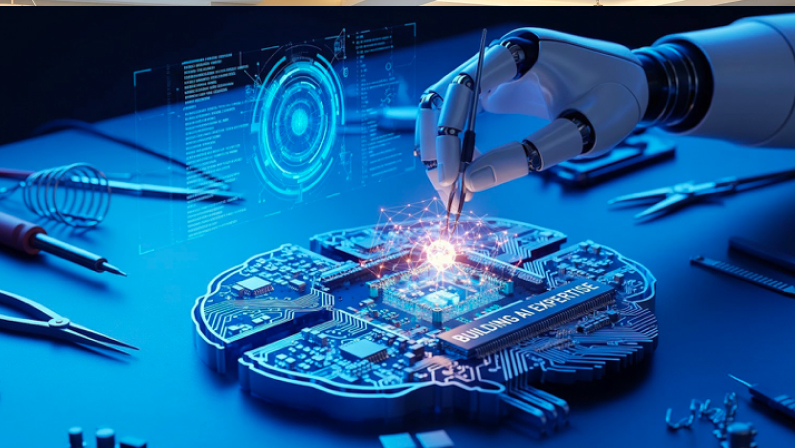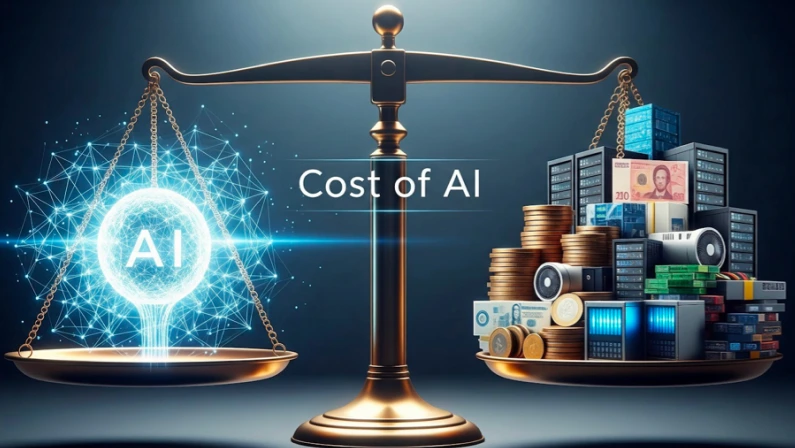
AI is becoming a bigger part of everyday business operations, but not all AI works the same way. You’ve probably heard about generative AI and predictive AI, but understanding the difference between the two can help you make smarter choices for your company.
Both are powerful tools, each with its own strengths. Generative AI creates content. Predictive AI forecasts what might happen next.
Knowing how each one fits into real-world use can guide your next investment, help your team work more efficiently, and improve how you serve your customers.
Let’s take a closer look at each one, compare how they work, and see where they make the biggest impact.
What Is Predictive AI?
Predictive AI is focused on forecasting. It utilizes data patterns to predict outcomes, enabling businesses to anticipate events and trends before they occur.
How It Works
This type of AI is built on machine learning models trained with historical and real-time data. The system identifies patterns, correlations, and anomalies, then applies that information to future scenarios. This makes predictive AI explained as a way to answer questions like “What’s likely to happen next?”
Examples
Common AI for business use cases include predicting customer churn, forecasting sales, flagging fraud, or anticipating supply chain disruptions. Predictive analytics AI is used across finance, healthcare, retail, and logistics—essentially any industry that relies on data-driven decisions.
To put predictive AI explained into real terms, here are a few places it shows up in business:
- A retail platform uses it to forecast next month’s demand for certain products.
- A telecom company identifies which customers are at risk of canceling their service.
- A finance team detects signs of fraud by identifying irregular transactions in real-time.

What Is Generative AI?
Generative AI focuses on creating. It uses existing data to generate new content, like text, images, code, and even music. The goal is to mimic human creativity and communication.
How It Works
Generative models are trained on large volumes of data to learn structure, style, and context. These models then produce new outputs that are similar to what they were trained on. This is often what people experience when they use tools like ChatGPT, DALL·E, or Midjourney.
Examples
Some popular generative AI applications include automated blog writing, image generation, chatbot conversations, and product design support. Here are a few familiar use cases or clear generative AI examples:
- A marketing team uses a text generator to draft product descriptions or blog posts.
- A designer inputs a style prompt and receives a set of AI-generated visual concepts.
- A business deploys a virtual assistant that answers customer questions in natural, conversational language.
Key Differences Between Generative AI and Predictive AI
The difference between generative and predictive AI primarily lies in their functions. Generative AI creates something new based on learned patterns. Predictive AI forecasts future outcomes based on existing patterns.
In practical terms, generative AI vs predictive AI can be seen like this:
Generative AI helps you write a product description. Predictive AI tells you which products are likely to sell best next month.
From an AI models comparison standpoint, generative models are often based on neural networks like transformers, while predictive models rely on statistical analysis and decision trees. Both use machine learning, but their outputs serve different business goals.
Similarities Between Generative and Predictive AI
Despite their differences, these two types of artificial intelligence share some core features. Both rely heavily on data. Both learn from examples. And both help businesses become more efficient.
They also support automation in various forms. Whether it’s through speeding up content creation or forecasting outcomes, both types of AI play a role in smarter workflows.
Understanding how machine learning works in predictive versus generative AI allows businesses to integrate the right tools based on their needs—whether to create or predict.
Choosing the Right AI for Your Business
Not every business needs both. Choosing between generative AI and predictive AI comes down to your use case. Are you trying to create something? Or are you trying to anticipate something? Here’s how to decide based on your business goals.
When to Use Predictive AI
If you need to make better decisions based on future trends, predictive AI is a strong fit.
It’s ideal for:
- Forecasting sales or customer behavior
Predictive models can help you spot upcoming demand shifts, buying patterns, or churn risks.
- Detecting risks or anomalies
In finance, IT, or security, predictive tools flag unusual activity before it becomes a bigger problem.
- Supporting business intelligence
Predictive AI strengthens your reporting and planning, helping teams make faster, more confident decisions based on data.

When to Use Generative AI
If your business depends on communication, creativity, or content, generative AI brings serious value.
It’s useful for:
- Automating content production
From writing product descriptions to drafting reports, generative tools can save hours of manual work.
- Enhancing creativity and design
Teams use it to explore visual concepts, generate mockups, or support branding efforts.
- Chatbots and virtual assistants
Generative AI powers smarter conversations and helps automate customer service without sounding robotic.
Bring Predictive AI Into Your Business with Leapify CRM
If your goal is to stay ahead of customer behavior, streamline operations, and reduce risks, predictive AI is a powerful choice. Leapify CRM makes it easier to apply this technology to your business through features like forecasting, automation, and predictive analytics AI.
Are you trying to improve customer retention, detect issues earlier, or support strategic planning? Leapify's predictive AI CRM gives you tools that work behind the scenes to keep you informed and ready.
If you’re looking to explore how predictive AI can help your team work smarter, contact Leapify today to see how AI fits into your goals.



